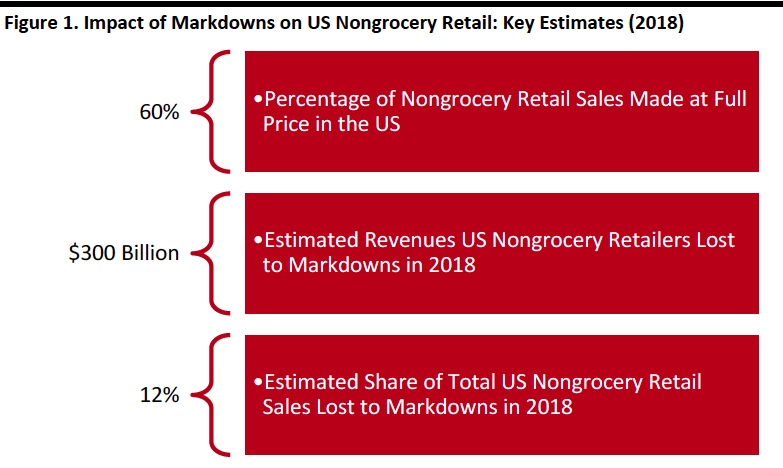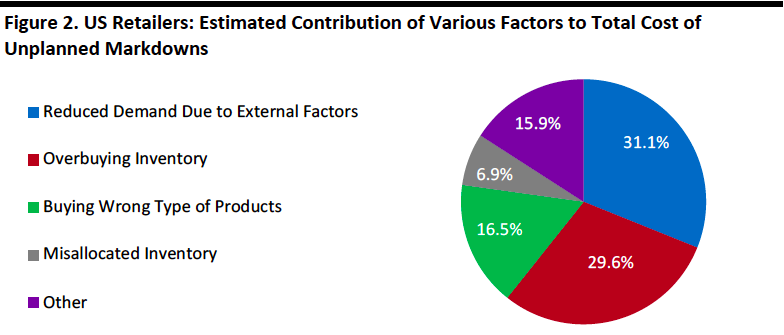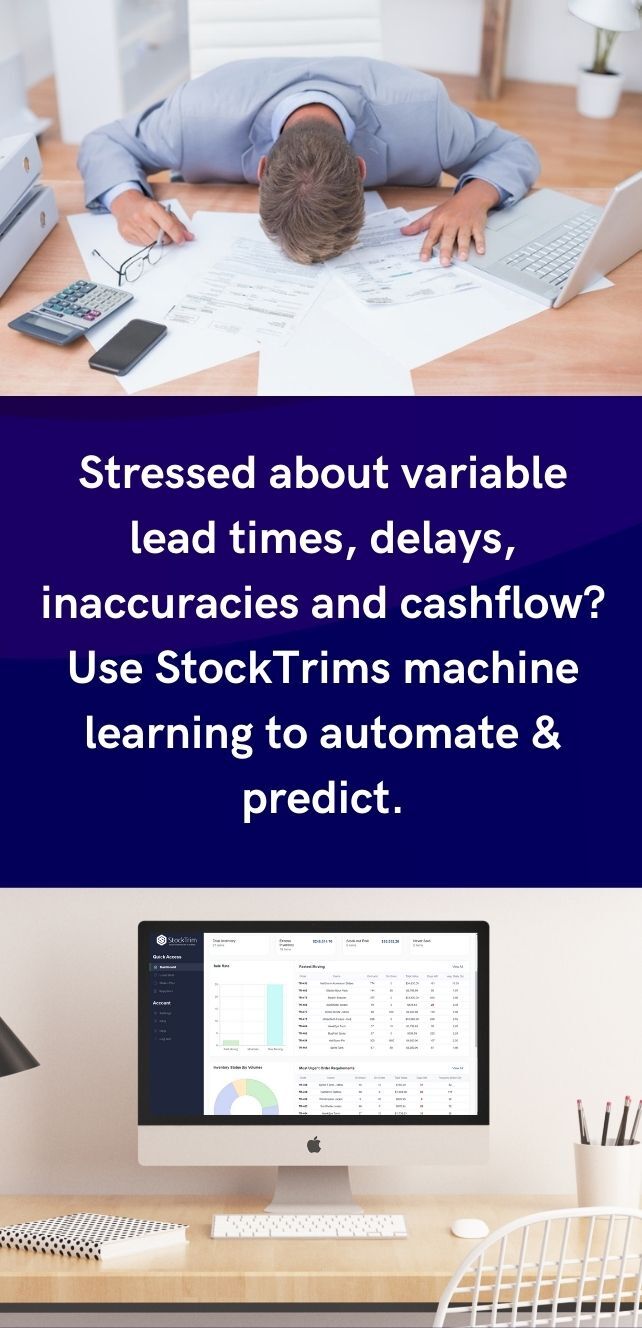In a highly competitive retail environment where customers’ preferences are always changing, what can retailers do to make more sales at full price?
A survey of retailers in the US suggest that the most important factor in avoiding unplanned markdowns is accurate inventory planning and demand forecasting.
It concluded that retailers could benefit from predictive analysis tools that use AI and machine learning to make more informed inventory decisions and anticipate where, when and what their customers want.
According to the survey, only 60% of all non-grocery sales are made at full price. This cost retailers about $300 billion in 2018, or 12% of all non-grocery sales.
 Estimated cost of markdowns is modeled on an average 30% discount across nongrocery retail.
Estimated cost of markdowns is modeled on an average 30% discount across nongrocery retail.
Source: Celect/Coresight Research
Most retailers will use promotions and end-of-season sales to boost turnover at times when shoppers expect great deals, but unplanned markdowns can badly hurt your bottom line.
Having to sell excess stock is sometimes due to factors outside your control, but more than half the time, it’s due to inventory decisions based on inadequate or inaccurate data.
Overbuying and buying the wrong type of products are the most common inventory mistakes leading to unplanned markdowns and it’s a problem for about half of retailers. For more than a third of retailers, underordering is also an issue, with a different result but a similar impact on the bottom line.
Each of these inventory mistakes is a bigger problem for retailers who rely on basic analytics and inventory management tools, such as spreadsheets and manual input systems, to make their ordering decisions.
That’s not surprising, given how difficult it can be to analyse and interpret data collected from instore and online sales.
From customer demographics to periodic sales comparisons and demand spikes, the vast amount of information can be overwhelming and confusing. The risk of human error is high and it’s difficult to have complete faith in the algorithm.

Source: Celect/Coresight Research
One client we work with, Sydney-based business owner Allie, explains:
“One data entry error when punching in the values in Excel had a detrimental impact on our ordering process.”
Using spreadsheets and manual inputs is also time-consuming, and therefore expensive (because your time is valuable!).
René from Dermal Systems in Canada says:
“If I had to manually calculate a purchase order, there's just not enough hours in the day. And then I'm placing my purchase order a week and a half later, which means that shipment is an extra three weeks later, because it seems to always double.”
Kristin from The Baron adds:
“I was spending five or six hours a month (on demand planning) – that’s considerably more expensive than paying the StockTrim subscription.”
Advanced analytics such as those employed by StockTrim not only help retailers buy the right amount of stock. They are also useful in planning promotions and make it easier to anticipate trends that will inform the kinds of products you buy.
Rene from Dermal Systems:
“We have seasonal ebbs and flows in our business because skin needs different things in winter than it does in summer. So, there are definitely some products that are more popular depending on the season, and StockTrim can even take those changes into consideration.”
An under-appreciated benefit of demand forecasting software is its ability to help retailers decide the best location from which to fulfil online orders. The survey suggests retailers may reduce the need for markdowns by offering multiple delivery options, e.g., shipping from stores and distribution centres, and click-and-collect.
Automated demand planning helps Australian probiotic drinks company Shine+ plan and manage optimal stock levels along with their Inventory Management Software Cin7 at their different warehouses. As Chief Operation Officer Andrew says:
“That’s important, especially if you sell and distribute your products through several channels like e-commerce and traditional brick and mortar stores.”

Also consider the ease with which predictive inventory software can identify stock-out risk, factor in anticipated growth, provide a snapshot of current stock levels and prompt you to place an order – all in a couple of minutes.
The bottom line is that advanced demand planning software improves helps you grow your business and increase profitability without significant investment of time or money.
Sue from Handrail Fittings in New Zealand says:
“I am now buying only what I need rather than overstocking ‘just in case’. This has allowed me to expand my range of products and therefore expand my customer base as well.”
In the highly competitive retail space, every advantage matters and manual tools such as spreadsheets are no longer adequate for retailers who need to fiercely protect profit margins, anticipate shopper trends and run smooth inventory operations.
To get a better overview of your inventory, take a free test run of our AI software - start now.


